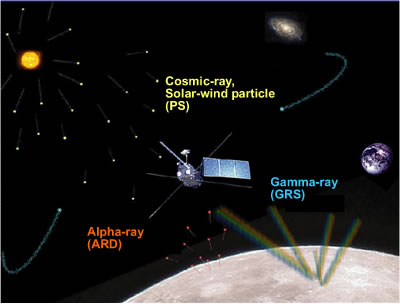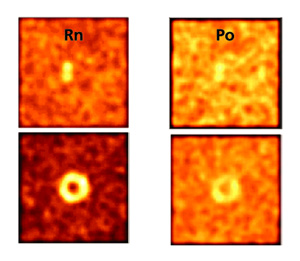Charged Particle Spectrometer (CPS)
The ARD will detect alpha rays emitted by Rn and Po on the lunar surface for identification of gas emanation and obtaining information on the crustal movement during the last - 50 years.
The PS will observe solar and galactic cosmic rays around moon. That is due to protecting human health in the space from radiation particles and to obtain basic cosmic rays data around moon for forecast of cosmic ray radiations in the space.

The ARD and the PS instruments consist of Si semiconductor detectors with high energy resolution. An incident particle is identified by the method of delta-E by total-E using the information of energy deposited in multilayer Si detectors respectively. We obtain not only energy information but also element information for the incident cosmic ray.
- Neutrons are produced in the lunar subsurface by irradiation of Galactic Cosmic Ray.
- Gamma rays with the energy characteristic to each element on the Moon are produced by interactions of those neutrons with surface elements. Natural radioisotopes also emit gamma rays.
- Elemental composition is determined by measuring the gamma-ray energies from the lunar orbit.



Takeshi Takashima
Department of Space Plasma Physics,
JAXA / ISAS